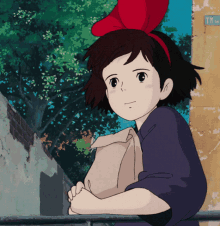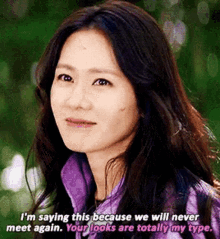From Ancient Greece to the fight for women’s suffrage to women’s marches and the #MeToo movement, the history of feminism is as long as it is fascinating. According to the International Women's Development Agency (IWDA), feminism is about all genders having equal rights and opportunities. It's about respecting diverse women's experiences, identities, knowledge, and strengths, and striving to empower all women to realize their full rights.
The first wave of feminism took place in the earliest era of human civilization and yet, in 2021, the fight is not over. However, in this modern century, some people don't even identify themselves as feminists, while others have a negative perception of feminism. Many people fear that feminism will bring about negative shifts in relationships, marriage, society, culture, power and authority dynamics, as well as business, job, and economic opportunities if and when women are on an equal footing with men.

Photo by Joel Muniz on Unsplash
Let us slide into your dms 🥰
Get notified of top trending articles like this one every week! (we won't spam you)What Is Meant By Feminist Utopia?
Whilst the term 'utopia' is often used to describe the impossible and a state where everything is perfect, it can help in identifying a goal and help us to work towards that goal.
Feminist utopia imagines a world without any gender oppression, envisaging a future or a reality where men and women are not stuck in traditional roles of inequality. Basically, a world where emotions are not gendered — men and women can be equally vulnerable, tough, aggressive, compassionate, and dominant.
It’s a world where there are no “boys’ toys” and “girls’ toys”, no women’s jobs and men’s jobs, and where gender identification doesn't matter. Nevertheless, we are still stuck in the gloom and doom of the dystopian society.
Let's be honest, “The Hunger Games” and “Divergent” are dystopian fictions that we cannot get enough of. Dystopian fiction is known to be hot and trendy however they also express our cultural anxieties, fueling the need for immediate change.
It is worth noting that in West European Countries, although more women than men live in cities, cities are mostly man-made. Sure, they can be emancipating for women offering many advantages in terms of educational and job opportunities, access to cultural facilities, and greater freedom from social control, but they also reflect the unequal power relations in society concerning gender, ethnicity, and sexuality. Even if the number of women politicians, administrators, and architects is continuously increasing, ‘male’ norms still guide the functioning of cities.
Cities are also planned and built by men for men. Despite inhabiting cities not controlled nor designed by them, women are, regardless, active agents attempting to re-conceive the city, to challenge and permeate the gendered boundaries, through the practices of their daily lives.
Additionally, what would a city that is a good place for both women and men look like? How do we get from here to that heavenly place?
Take the Quiz: Which Indian city is the perfect holiday spot for you!?
Let's match you with an Indian city that you would love!
How Do We Build a Feminist Utopia?
It is true that since the past decades, we are slowly moving towards a gender-equal utopia, yet feminist dystopia still exists in every nook and cranny of the world. As a matter of fact, we are still very far from the “perfect” world where gender equality has been fully achieved. Here are some major factors threatening gender equality:
1. Uneven access to quality education
Around the world, although more girls than ever are going to school, 132 million girls are out of school and millions more are in school but not learning. Moreover, during adolescence, a higher number of girls are often school dropouts due to teenage pregnancy and the expectation that they should contribute to household work.
Yet, education is a fundamental human right and despite this, girls remain the most marginalized. To bridge this gap, the Leave No Girl Behind Campaign, established in 2018, is bringing together governments, educationists, and youth across the world with a shared commitment to ensuring all girls complete 12 years of quality education so as every girl has the power to transform her life.
2. Lack of employment rights
With only 6 countries in the world where women and men have the same legal work rights, finding a job as a woman is even tougher. According to International Labor Organization (ILO), the global labor force for women is close to 49% while for men is around 75%. Woman having the same right as men when it comes to labor force not only help reduce the gender gap in the workplace but can substantially boost global GDP.
3. Gender Pay Gap
In the United States, the gender pay gap has remained relatively stable over the past 15 years. Nonetheless, the significant wage gap between men and women persists. In fact, women earn only 79 cents for every dollar earned by men. On top of that, women's peak earning age is lower than that of the average man.
One way women are closing the pay gap, according to a 2018 wage gap report from the Georgetown Center on Education and the Workforce, is by getting to get one more degree.
“A woman with a bachelor’s degree earns $61,000 per year on average, roughly equivalent to that of a man with an associate’s degree,” the Georgetown CEW reports. “The same rule holds for women with master’s degrees compared to men with bachelor’s degrees and for each successive level of educational attainment.”
Besides getting another degree, women can also pick a college major that pays well. It has been shown that women majoring in STEM earn a lot more than women who major in liberal arts.
4. Racism
Gender inequality and racism have been closely linked for a long time. “Feminists: What Were They Thinking?” is a 2018 documentary film available on Netflix that discusses the primary aim of the feminist movement and the challenges faced by women of all races in earlier times.
Also, when it comes to the wage gap, it is important to highlight that the wage gap is larger for women of color. Furthermore, transgender women and immigrants also experience negative effects on their earnings.
5. Lack of political representation
Women's participation and leadership in politics are essential to achieving a gender-equal utopia. Only 25% of all national parliamentarians are women and at the current rate of progression, gender parity in national legislative bodies will not be achieved before the year 2063.
Moreover, certain issues that female politicians tend to bring up such as parental leave and childcare, pensions, gender equality laws, and gender-based violence, are often neglected.
6. Lack of body autonomy
The right of a woman or girl to make autonomous decisions about her own body and reproductive system is at the core of her basic rights to equality and bodily integrity. Equality in reproductive health includes access, without discrimination, to affordable, quality contraception, including emergency contraception. However, many women around the world don't have the authority over their own body as well as limited access to birth control. According to the World Health Organization, over 200 million women who don't want to get pregnant are not using any type of contraception.
7. Societal mindset
Changing our own mindset is key to gender equality. We live in a society where it is the norm for women to be natural childcarers while most men don't really want much to do with their children. It is believed that along with their jobs, women should contribute fully to their households.
Thankfully, the new generations of men are standing up for equality and have started contributing to their households.
8. “Boys don't cry!”
As cringe as it may seem, this is a “reality” in some societies while not everywhere. Men are often victims here and are called to shut down their emotions and feelings, not showing their vulnerable side as they are supposed to be “strong”. Regardless, if we want to fully achieve gender equality and build a feminist utopia, men must be allowed to express themselves freely without feeling judged.
In the US, the male-to-female teenage suicide death ratio is estimated at 3:1. This can be explained by the toxic traditionally masculine norms such as the reluctance to seek help, emotional inexpressiveness, and social exclusion.

Photo by Womanizer Toys on Unsplash
“Being . . . a woman is an awful tragedy. Yes, my consuming desire to mingle with road crews, sailors and soldiers, bar room regulars—to be a part of a scene, anonymous, listening, recording—all is spoiled by the fact that I am a girl, a female always in danger of assault and battery. My consuming interest in men and their lives is often misconstrued as a desire to seduce them, or as an invitation to intimacy. Yet, God, I want to talk to everybody I can as deeply as I can. I want to be able to sleep in an open field, to travel west, to walk freely at night.” — Sylvia Plath
Coming back to the question of how to build a feminist utopia, the first step of the million steps to be taken is to change our own mindset first. No matter how we classify ourselves, we are all humans, and we're born with equal natural capabilities. A mindset shift can make all the other issues easier to tackle.
Still, building a truly feminist utopia is far from reach but by breaking the norms and stereotypes that are restricting us from reaching our full potential, a feminist utopia is not far from reality.















